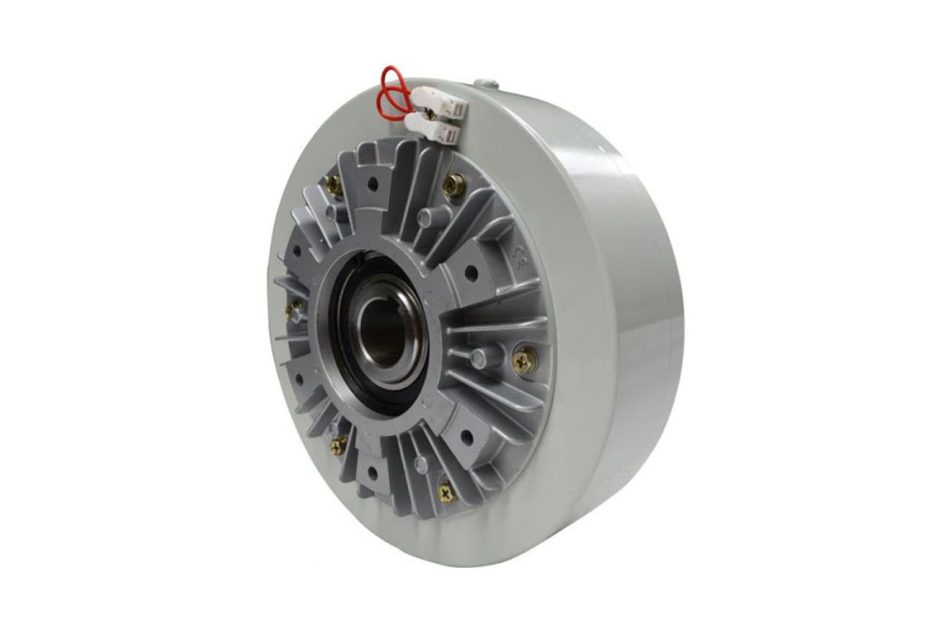Magnetic Particle Brakes are a critical component in various mechanical systems, offering precise control over torque. Understanding their role in the intricate dance between torque and speed characteristics is crucial for optimizing performance in a myriad of applications.
The Basics of Magnetic Particle Brakes
Magnetic Particle Brakes : Principles of Operation
Magnetic Particle Brakes operate on the principle of magnetorheology, where the viscosity of a fluid (in this case, the magnetic particles) changes in response to an applied magnetic field. These brakes consist of two main components: a rotor and a stator. The rotor is connected to the output shaft, while the stator is fixed. When the brake is engaged, the magnetic field generated by the stator induces a torque on the rotor, controlling the rotational speed.
Magnetic Particle Brakes : Applications
- Tension Control: Magnetic Particle Brakes find extensive use in web processing industries, such as printing and packaging, where maintaining consistent tension is crucial.
- Load Simulation: They are employed in testing and simulation setups to mimic real-world loading conditions.
Torque vs. Speed Characteristics
Understanding the relationship between torque and speed is pivotal in designing systems that demand precise control. Magnetic Particle Brakes play a crucial role in shaping these characteristics, offering a versatile solution for various applications.
Influence on Torque Characteristics
Magnetic Particle Brakes provide a controllable and variable torque output, allowing for precise adjustments. The torque characteristics are influenced by factors such as the strength of the magnetic field, the amount of magnetic particles present, and the design of the brake.
Advantages in Torque Control
- Smooth Engagement: Magnetic Particle Brakes offer smooth and gradual torque engagement, preventing sudden jolts or jerks in the system.
- Precise Adjustments: The ability to finely tune the magnetic field strength enables precise adjustments in torque, catering to diverse application requirements.
Impact on Speed Characteristics
The torque vs. speed curve of a mechanical system is crucial in understanding its dynamic behavior. Magnetic Particle Brakes contribute significantly to shaping this curve by providing a load-dependent resistance to the rotating elements.
Applications in Speed Control
- Motor Testing: Magnetic Particle Brakes are utilized in dynamometer systems for testing electric motors, allowing precise control over the load and speed.
- Printing Presses: In printing applications, these brakes regulate the speed of rollers, ensuring accurate and consistent printing.
A Comparative Analysis
To better understand the impact of Magnetic Particle Brakes on torque vs. speed characteristics, let’s compare them with other braking systems commonly used in industrial applications.
| Braking System | Advantages | Disadvantages | Applications |
|---|---|---|---|
| Magnetic Particle Brakes | Precise torque control, smooth engagement | Limited to lower power applications | Printing, Tension Control, Testing |
| Friction Brakes | High torque capacity, wide power range | Wear and tear, less precise control | Automotive, Industrial Machinery |
| Hydraulic Brakes | Heat dissipation, high torque capability | Fluid leakage, maintenance required | Automotive, Heavy Machinery |
This comparative analysis highlights the unique advantages of Magnetic Particle Brakes, especially in applications demanding precise torque control and smooth engagement.
Factors Influencing Torque vs. Speed Characteristics
Several factors influence the torque vs. speed characteristics of a system utilizing Magnetic Particle Brakes. It’s essential to consider these factors for optimal performance:
- Magnetic Field Strength : The strength of the magnetic field generated by the stator significantly influences the torque output. Higher magnetic field strength results in increased torque, providing the flexibility to tailor the braking force according to the application’s requirements.
- Amount of Magnetic Particles : The concentration of magnetic particles in the fluid within the brake affects its overall performance. A higher concentration typically results in a stronger response to the applied magnetic field, allowing for finer control over torque.
- Design Considerations : The overall design of the Magnetic Particle Brake, including the arrangement of the stator and rotor, plays a crucial role in determining the torque vs. speed characteristics. Careful design considerations ensure optimal performance and reliability.
Conclusion
In conclusion, Magnetic Particle Brakes play a crucial role in shaping the torque vs. speed characteristics of mechanical systems. Their ability to provide precise torque control, coupled with smooth engagement, makes them indispensable in applications where accuracy and reliability are paramount. As industries evolve, the versatility and adaptability of Magnetic Particle Brakes position them as a key component in the realm of torque and speed control.
